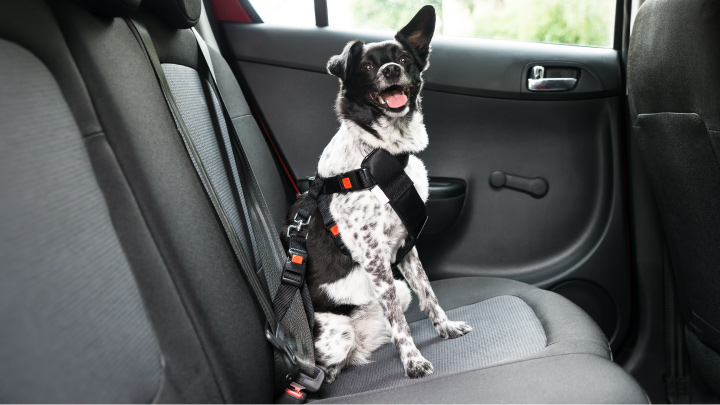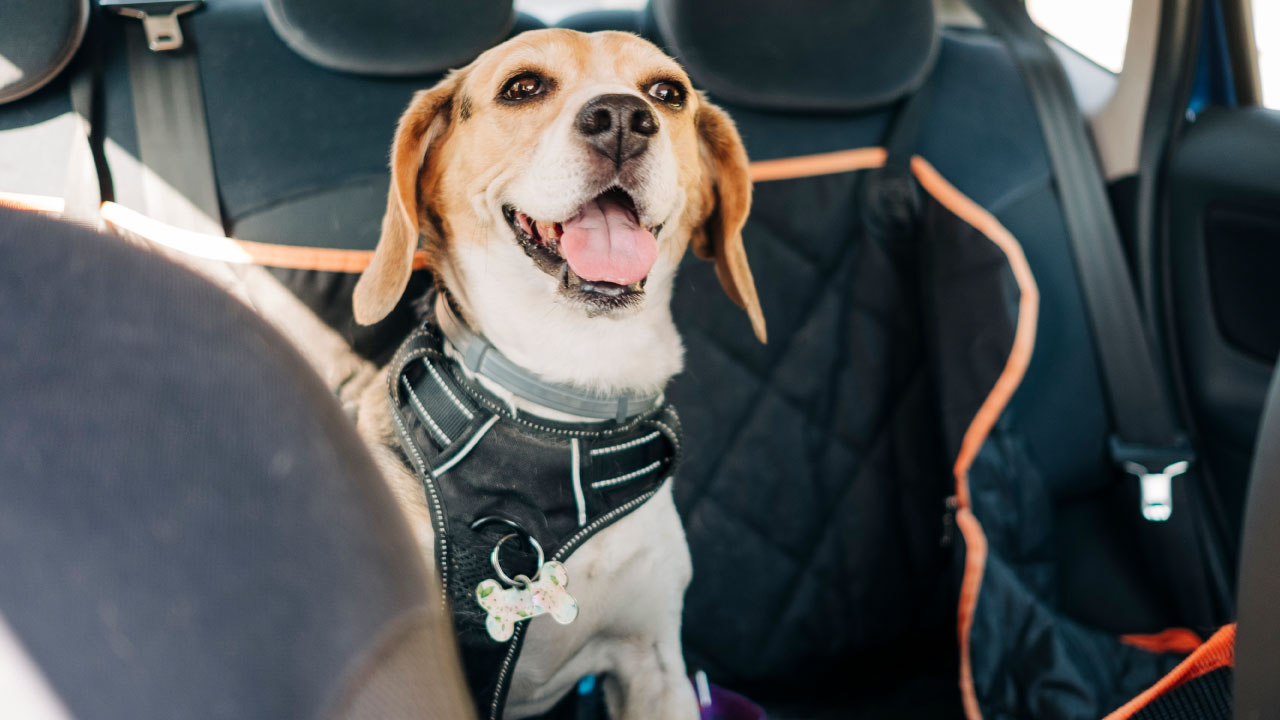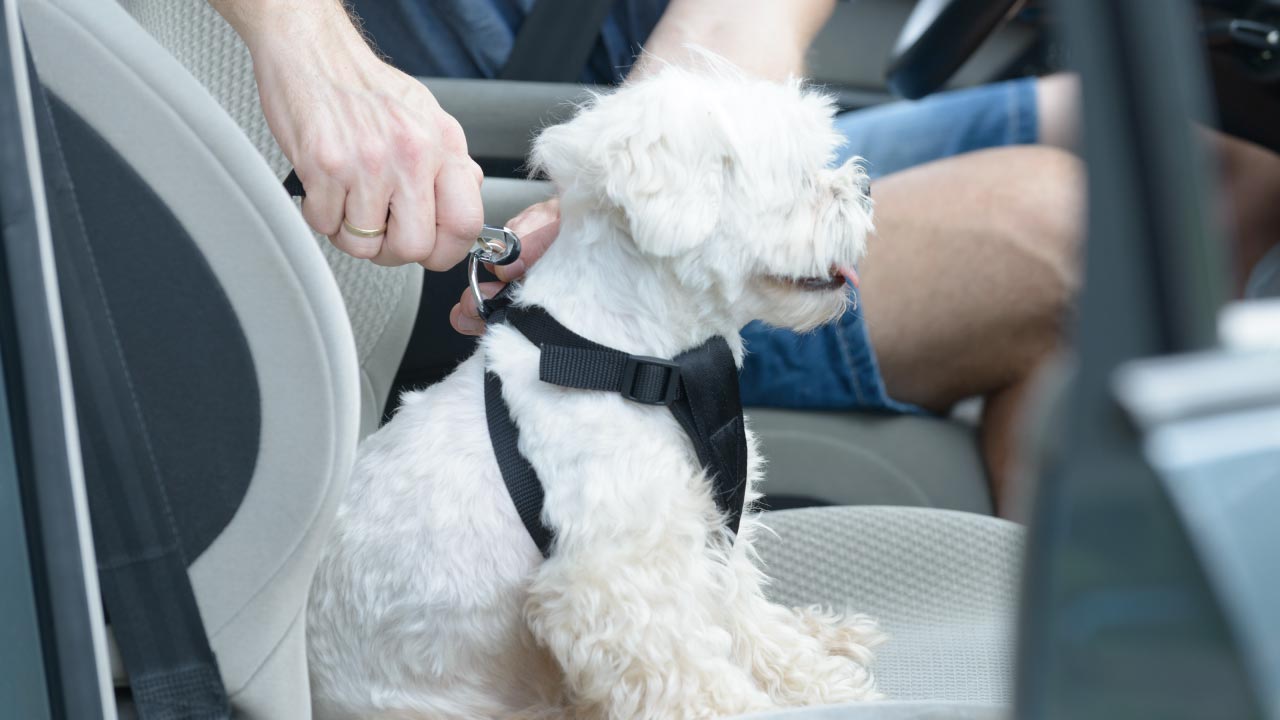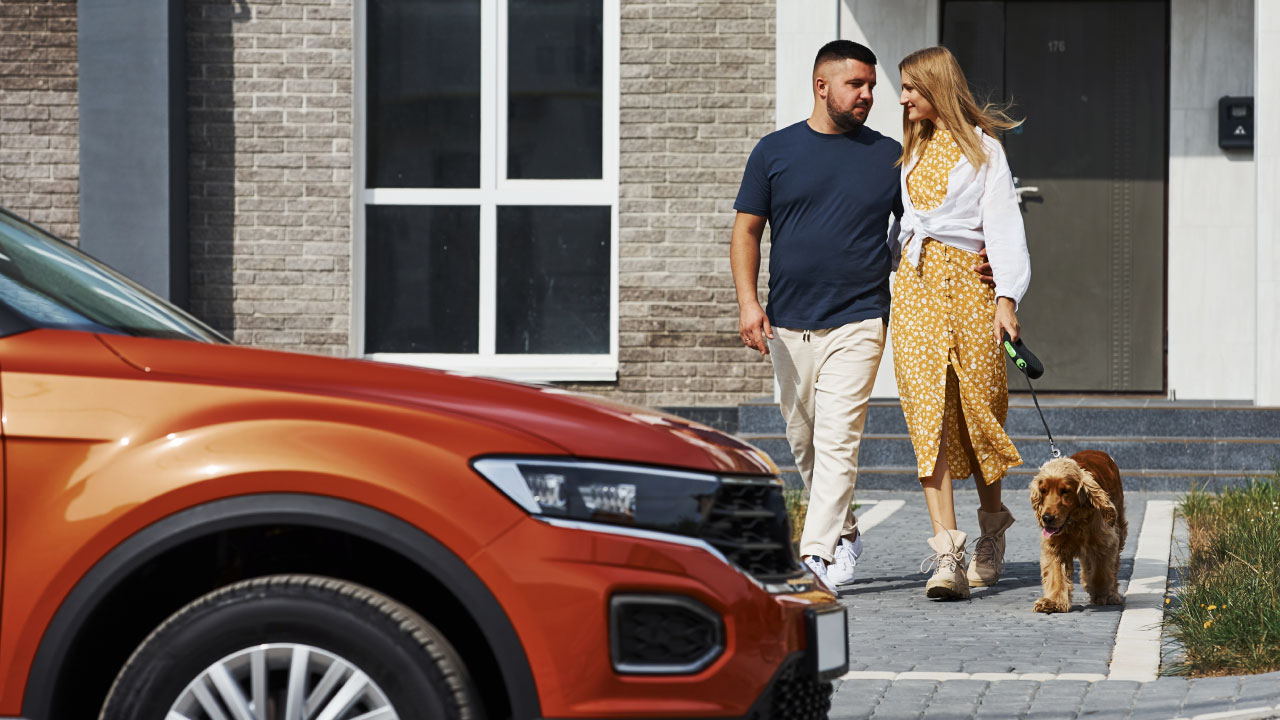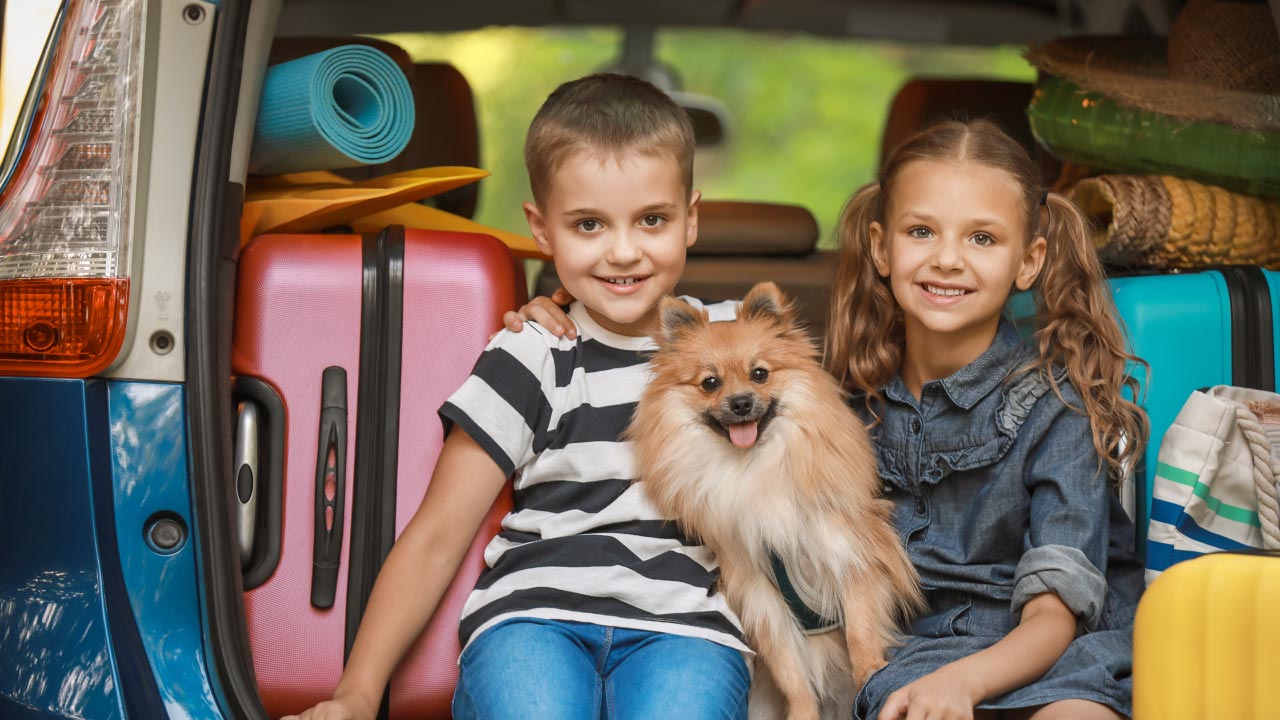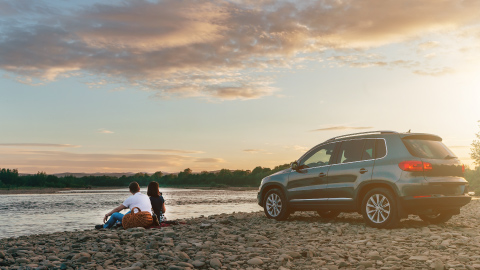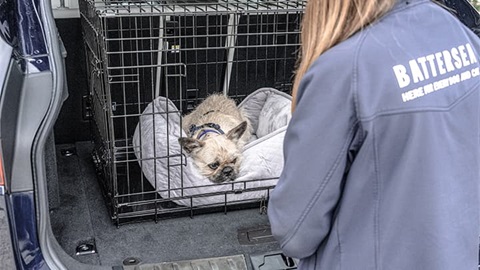Guide to Travelling in the Car with Your Dog
17th Jun 2022
In partnership with Battersea Dogs & Cats Home
We’re proudly partnered with Battersea to offer help and travelling advice to all our dog-owning drivers. This means we can look after you and your two big loves – your car and your pet! Whether your dog is an excitable puppy or is a bit older, any owner will tell you that travelling in a car with them can sometimes be a challenge.
So, as we fast approach the summer holidays, where drivers and their pets are about to embark on staycations, we asked Battersea to share their expert advice to help your dog stay safe and relaxed on car journeys. Read their step-by-step guide below to help your dog stay safe and relaxed during car journeys.
General things to remember
Some dogs find being in a moving car stressful and can show this in a number of ways, including whining, heavy panting, through to vomiting or even just refusing to get into the car. Creating a positive association with your vehicle will help your dog overcome this potentially stressful situation. Alongside being comfortable in the car, dogs must be properly secured, so they cannot distract the driver, or accidentally hurt themselves. Use a car harness on the backseat of the car, a travel crate, or a dog guard in the boot to help keep you and your dog safe whilst driving.
Creating a familiar and comfortable car environment
If your dog is happy to get into the car without your assistance, put a familiar dog bed and blankets inside to create a soft, comfortable space they recognise. This will help them to feel secure, and the bed and blankets will also reduce the chance of them losing their balance when the car is in motion. If your dog is crate-trained a secured crate can also be a safe and familiar environment for them.
Getting your dog used to the car
If your dog is uneasy around your car, take some time to get them used to it before any trips need to be made.
Walk your dog around the outside of the stationary car while all doors are shut, and the engine is off. Do not force them closer to the car but allow them to investigate it in their own time, if and when they feel comfortable. Start creating a positive association by rewarding them with a treat, a toy, or some praise any time they engage with the car, such as moving towards it, sniffing it or looking at it.
Keep these sessions with the car short to begin with, only doing a couple of laps around the car before taking a break. Repeat this step a few times until your dog is displaying confidence walking around the car. When your dog is comfortable and relaxed around the outside of the car, feel free to move on to the next step.
Getting inside the car
Before you take your dog to the car, open the door or the boot (wherever you plan to have the dog while travelling), and put some of their blankets inside. Remember to keep the engine off, then walk the dog around the car again and reward them whenever they move towards an open door or start to investigate.
Once your dog is comfortable around the open door, walk towards it and place a treat just inside, such as in the outer foothold, where the dog can still see it but doesn’t have to go into the car to get it. When your dog is comfortable taking treats from this position, gradually move the treats further into the car, so they eventually need to climb in to get it. If they are cautious and don’t want to get in, go back and build towards this step again. You can also try getting into the car yourself as your dog may be more comfortable following you in.
When your dog is happy to enter in and out of the car, you can build up the amount of time they spend there during these sessions. In order to do this, find some time to sit in the car with them and give them a long-lasting treat like a Kong or a chew. Time spent inside the car enjoying a treat with you will build a positive association. Once your dog is relaxed being inside the car, you can move on to step four.
Closing the door
The next step is to help your dog feel calm and comfortable inside the car with the door closed. First, encourage them to get into the car, and give them a treat to settle them. Carefully close the car door and open it again after a few seconds to give them the option to get out. If your dog is relaxed during this step, you can do this a few more times, leaving the doors shut for a little longer each time. If they’re worried by the door being shut, repeat this step, but only shut the door partly to begin with. Gradually build up to completely shutting the door, whilst having a treat to occupy themselves.
Once they are comfortable being in the car with all the doors shut, you can introduce the engine noise. With your dog inside with a treat, and the door closed, turn the engine on and keep it running for a few seconds. Turn it off and let your dog out of the car. Repeat this step a few times, making sure they still have a treat or toy to occupy themselves, whilst letting the engine run slightly longer each time. Look out for excessive panting, barking, or other signs of stress, and only keep practising if your dog appears comfortable.
Going for a drive
Once your dog is comfortable being in the car whilst the engine is on you can begin to go for short drives. Keep the drives very short initially, such as down the street and back again, whilst ensuring a slow and smooth journey. Start with short journeys before gradually increasing the distances you travel. Once they are comfortable, and you can increase the length of the journeys, make sure your first real trips are to take your dog to places for fun walks and activities. This will build the positive association that getting in the car means going to fun places.
More advice from the experts
With the helpful advice and tips above, you will have a better chance of getting your dog used to travelling in the car. For more great advice on car ownerships and pets, please head over to our Advice for Pet Owners section.

